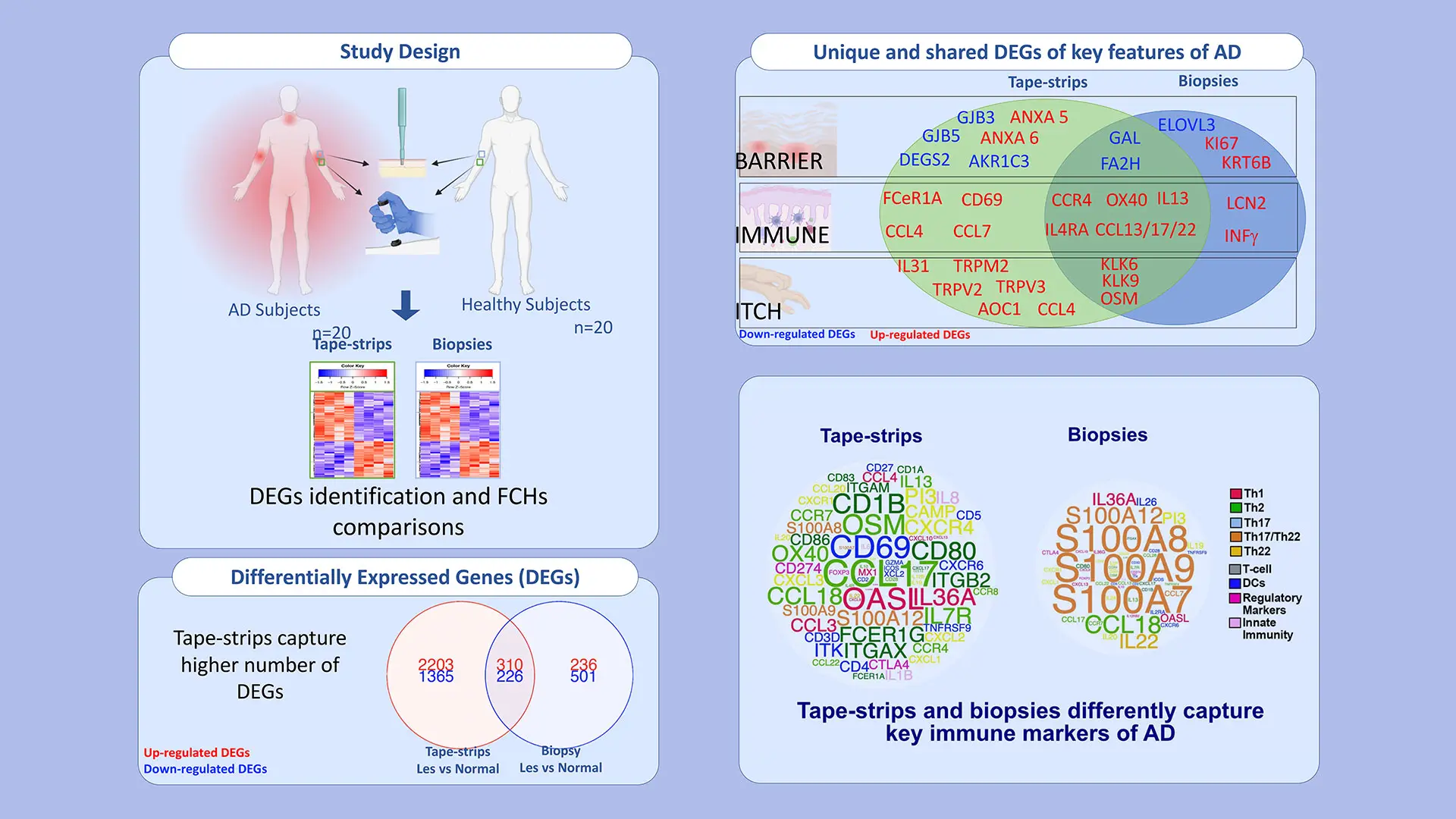The gold standard for identifying the molecular profile of skin diseases is a skin biopsy. Skin biopsies have limitations because they are invasive, painful, prone to infection, and lead to scarring. Thus, biopsies are often not feasible for longitudinal sampling in clinical trials, or for pediatric populations.
Emma Guttman, MD, PhD, Waldman Professor and System Chair, the Kimberly and Eric J. Waldman Department of Dermatology at the Icahn School of Medicine at Mount Sinai, and her research team have revolutionized the way the skin is sampled. Tape strips, a method that was developed primarily for identifying melanomas, were adapted by Dr. Guttman and her team to study inflammatory skin disease and skin cancers in a noninvasive way. A tape strip can be placed on the skin multiple times, gathering tiny quantities of skin cells each time.

Tape strips and biopsies capture overlapping but distinct features of the AD molecular signature.
“We thought that we’ll only get the profile of the outer layers of the skin but, surprisingly, we also get a window into what happens in layers that are much deeper. Recently, we also showed the phenotype of diseases in which the pathology is very deep, like hidradenitis suppurativa. Tape strips also allow us to understand the phenotype of atopic dermatitis (AD) in children and follow them longitudinally,” says Dr. Guttman.
“In one of our latest studies, our team compared head-to-head biopsies and tape strips in the same AD patients. In these intra-patient comparisons, we found that biopsies and tape strips samples are highly comparable,” says Dr. Guttman. “In fact, we were able to identify as good, if not better, itch and barrier processes using tape strips.” This study also identified a single biomarker (iNOS/NOS2) that completely differentiated AD and psoriasis, which the team has patented.
The research using tape strips was published in many leading medical journals in 2023 and was featured at national and international conferences. “We are now considered the world leaders in this field. We are also expanding the use of tape strips to better understand skin cancers and skin toxicities due to cancer treatments, such as in graft versus host disease (GVHD) and skin toxicity during immunotherapy for melanoma,” says Dr. Guttman.
